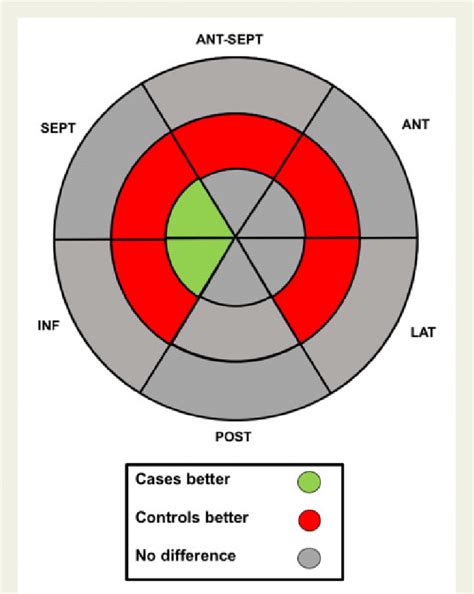lv bullseye | bulls eye speckled tracking lv bullseye This video provides an easy-to-interpret bull's-eye plot that displays all the LV .
$80.00
0 · longitudinal strain bull's eye
1 · bullseye strain imaging
2 · bulls eye speckled tracking
3 · bull's eye tracking video
4 · bull's eye tracking
5 · bull's eye plot normal ef
6 · bull's eye mapping
Find your adidas browse - Weightlifting - Shoes - Sale at adidas.com. All styles and colors available in the official adidas online store.White Shoes & Sneakers. A crisp pair of white sneakers goes with just about everything in your wardrobe. Check out our adidas white shoes and pick one that fits your vibe the .
The bull’s eye plot can be acquired either by AFI algorithm or standard two-dimensional (2D) strain algorithm. Both methods are based on 2D STI, with quantitative information generated by measuring longitudinal strain from three apical views (apical long-axis view, 4- and 2-chamber views) with frame . See moreThe major technical limitation for longitudinal strain bull’s eye acquisition is the need of high-quality echocardiographic images in standard apical views. Significant risk of misdiagnose . See moreThe bull’s eye plot serves as a reconstructional modality based on global and regional longitudinal systolic strain measurements. Its reproducibility therefore is consistent with the reproducibility of speckle . See more

The bull’s eye plot offers an intuitive visual overview of the global and regional Lv myocardial function status in various cardiomyopathies with LVH. The bull’s eye longitudinal strain mapping is clinically feasible and the plot patterns derived by a further expansion of this technique in clinical practice provide clues to the etiology of cardiomy. See more
The bullseye plot demonstrates a significant change global longitudinal strain (GLS) (-20.7% to . This video provides an easy-to-interpret bull's-eye plot that displays all the LV .
This bull’s eye plot provides an intuitive overview of LV systolic function status in a single diagram. A comprehensive demonstration on the typical bull’s eye plot patterns of various cardiomyopathy patients with LVH in the literature is sparse.
The bullseye plot demonstrates a significant change global longitudinal strain (GLS) (-20.7% to -16.1%) whereas only a mild decrease in left ventricular (LV) ejection fraction (EF) (60% to 55%) from pre- to post-anthracycline treatment.This video provides an easy-to-interpret bull's-eye plot that displays all the LV segments from appropriate tracking. After watching this video, you will also learn how to interpret the GLS. The bullseye plot demonstrates a significant change global longitudinal strain (GLS) (-20.7% to -16.1%) whereas only a mild decrease in left ventricular (LV) ejection fraction (EF) (60% to 55%) from pre- to post-anthracycline treatment.
The bull’s-eye plot, much like the strain graph, is a visualized version of data collected from strain imaging echocardiography. It gives you information on how well segments of the left ventricle wall contract.This review article focuses on the practical aspects of measuring LV global longitudinal strain (GLS), reviews the clinical implications of impaired LV GLS strain and provides a glimpse into the future clinical applications of this technology. More importantly, both AL and ATTR cardiac amyloidosis patients demonstrate a characteristic ‘bulls-eye’ pattern of apical sparing on longitudinal strain imaging, which is sensitive (93%) and specific (82%) permitting discrimination of amyloidosis from others causes of LV wall thickening and also portends an adverse prognosis . Conversely .
The patient-specific bull's-eye map will help to understand the LV morphology at a glance and to minimize the gap between 3D and 2D LV morphologies because it simultaneously represents patient-specific segment information on the . Echocardiographic global longitudinal strain (GLS) has been recommended as a means to follow patients at risk of cancer chemotherapy-related left ventricular (LV) systolic dysfunction. The following are pragmatic points to remember:Left ventricular systolic function can be assessed by quantifying the rate of change of the mitral regurgitant jet, with normal function showing a rapid increase in LV pressure into the low-pressure left atrium.
This bull’s eye plot provides an intuitive overview of LV systolic function status in a single diagram. A comprehensive demonstration on the typical bull’s eye plot patterns of various cardiomyopathy patients with LVH in the literature is sparse.The bullseye plot demonstrates a significant change global longitudinal strain (GLS) (-20.7% to -16.1%) whereas only a mild decrease in left ventricular (LV) ejection fraction (EF) (60% to 55%) from pre- to post-anthracycline treatment.
This video provides an easy-to-interpret bull's-eye plot that displays all the LV segments from appropriate tracking. After watching this video, you will also learn how to interpret the GLS. The bullseye plot demonstrates a significant change global longitudinal strain (GLS) (-20.7% to -16.1%) whereas only a mild decrease in left ventricular (LV) ejection fraction (EF) (60% to 55%) from pre- to post-anthracycline treatment.The bull’s-eye plot, much like the strain graph, is a visualized version of data collected from strain imaging echocardiography. It gives you information on how well segments of the left ventricle wall contract.This review article focuses on the practical aspects of measuring LV global longitudinal strain (GLS), reviews the clinical implications of impaired LV GLS strain and provides a glimpse into the future clinical applications of this technology.
More importantly, both AL and ATTR cardiac amyloidosis patients demonstrate a characteristic ‘bulls-eye’ pattern of apical sparing on longitudinal strain imaging, which is sensitive (93%) and specific (82%) permitting discrimination of amyloidosis from others causes of LV wall thickening and also portends an adverse prognosis . Conversely . The patient-specific bull's-eye map will help to understand the LV morphology at a glance and to minimize the gap between 3D and 2D LV morphologies because it simultaneously represents patient-specific segment information on the . Echocardiographic global longitudinal strain (GLS) has been recommended as a means to follow patients at risk of cancer chemotherapy-related left ventricular (LV) systolic dysfunction. The following are pragmatic points to remember:
longitudinal strain bull's eye
bullseye strain imaging
bulls eye speckled tracking
$45.19
lv bullseye|bulls eye speckled tracking


























